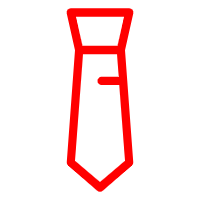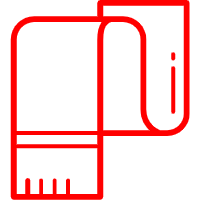Introduction
As one of the essential accessories for fashionable men, ties can not only showcase personal taste but also enhance the overall outfit. The custom tie market is gradually gaining attention, especially as the demand for businesses and groups increases. This article will discuss the differences, advantages, and disadvantages of woven and printed ties, and how to choose the right tie according to the occasion and demand.
Definition of Woven Ties
Woven ties are created by weaving the warp and weft threads of the tie fabric using a specific weaving method. These ties have a unique texture and rich patterns.
Definition of Printed Ties
Printed ties are made by printing patterns or text onto the tie fabric. The patterns of printed ties are clearer, and the colors can be more diverse.
Advantages of Woven Ties
Personalized Design
Since the patterns and colors of woven ties are created directly by weaving the threads, they can display a highly personalized design effect.
Durability
Due to the interweaving of warp and weft threads, woven ties have strong wear resistance and are not prone to fading after long-term use.
Elegant Appearance
Woven ties have a thicker texture and look more noble and elegant, making them suitable for formal occasions.
Advantages of Printed Ties
Flexible Design
Printed ties can flexibly print various patterns, colors, and fonts directly onto the tie fabric, making the design style more diverse.
Wide Range of Color Choices
Printed ties offer a wider range of color options, suitable for various occasions and matches.
Cost-effective
Compared to woven ties, printed ties have a lower cost in the production process, making them more affordable.
Disadvantages of Woven Ties
Design Limitations
Due to the limitations of weaving methods, woven ties may not be as flexible in design as printed ties.
Price
Since the production process is more complex, woven ties are generally more expensive than printed ties.
Disadvantages of Printed Ties
Wear Resistance
Compared to woven ties, printed ties have slightly worse wear resistance and may fade after long-term use.
Gradient Effect
Printed ties do not perform as well in gradient colors compared to woven ties.
Choosing the Right Tie for the Occasion
Business Occasions
In formal business settings, the noble and elegant woven ties better showcase personal temperament.
Casual Occasions
In more casual settings, the diverse patterns and rich colors of printed ties better display personal characteristics.
Gifts
As gifts, either woven or printed ties can be chosen based on personal preferences and occasions.
Custom Ties for Businesses
Businesses or groups can choose woven or printed ties according to their own needs to display their corporate image or convey specific information.
How to Choose the Right Tie
Material
Pay attention to the texture and comfort of the tie material when selecting a tie. Silk, wool, and cotton materials are generally popular choices.
Length and Width
The length and width of the tie should match the wearer’s height and body type. Generally, the tie length should be between the mid-thigh and knee, while the width should be chosen based on collar width and knot style.
Color and Pattern
Choose suitable colors and patterns according to different occasions and clothing patterns; in casual settings, opt for more vibrant colors and personalized patterns.
Maintenance and Care
Cleaning
Ties may get stained during use and need to be cleaned promptly. You can choose dry cleaning or hand washing, avoiding the use of strong stain removers.
Storage
After use, roll up the tie neatly and avoid folding or squeezing. You can use a dedicated tie rack for storage to maintain the shape and prolong its lifespan.
Accessories
Using tie clips or tie bars can help keep the tie neat and prevent it from becoming too loose during use.
Conclusion
Woven and printed ties each have their own characteristics, advantages, and disadvantages, and are suitable for different occasions and requirements. When choosing a custom tie, consumers should consider their own needs and the occasion, taking into account factors such as material, design, and price, to select the most suitable tie.
Frequently Asked Questions
- What are the differences in material between woven and printed ties?
There is no significant difference in material between woven and printed ties. The primary difference lies in the manufacturing process. Woven ties are created through weaving threads, while printed ties have patterns directly printed onto the fabric.
- How can I determine the quality of a tie?
The quality of a tie can be determined by its material, details, and comfort. Generally, ties made of silk, wool, and cotton materials are of good quality, with proper attention to detail and a high level of comfort.
- How should I choose the width of a tie?
The width of a tie should be chosen based on the wearer’s body type, collar width, and knot style. Slim ties are suitable for thinner body types and narrower collars, while wide ties are more appropriate for larger body types and wider collars.
- How do I clean and maintain a tie?
You can choose dry cleaning or hand washing for cleaning a tie, avoiding the use of strong stain removers. For maintenance, roll up the tie neatly after use and avoid folding or squeezing. Use a dedicated tie rack for storage to maintain its shape and prolong its lifespan.
- What occasions are suitable for wearing woven ties? What occasions are suitable for wearing printed ties?
Woven ties are more suitable for formal business occasions, where their elegant appearance can showcase personal temperament. In contrast, printed ties, with their diverse patterns and rich colors, are better suited for more casual settings, where they can display personal characteristics. Choose the appropriate tie style based on the occasion and your needs.
Post time: Apr-19-2023





